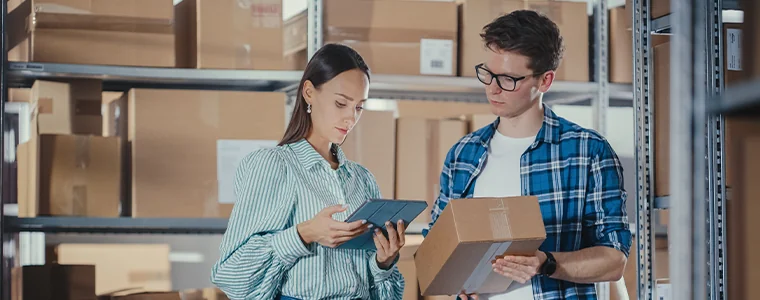Inbound logistics moves supplies, raw materials, and/or inventory to a business. In other words, inbound logistics provide an organization with the items it needs to sell products to its customers. Given this, it’s easy to see why inbound logistics are absolutely crucial to any business’s supply chain.
In this article, we’ll take a deeper look inbound logistics. What, exactly, qualifies as inbound logistics? How, exactly, do inbound logistics work? (We’ll include examples!) And, maybe most importantly, what benefits and challenges does it present to an organization and its supply chain manager?
With all the answers to these questions, you’ll get a solid foundation in this fundamental area of logistics.
Inbound vs. Outbound vs. Reverse Logistics
Want to learn more about these critical logistics processes—and the differences between them? Check out our other articles on these topics:
- What Is Outbound Logistics? How Does It Work?
- What Is Reverse Logistics? How Does it Work?
- Inbound & Outbound Logistics: What’s the Difference?

Inbound Logistics: Understanding the Basics
The term “inbound logistics” describes the processes by which supplies, raw materials, and even finished products make their way to a manufacturer, supplier, wholesaler, retailer, or reseller. These companies will either sell these items directly to customers or use these items to create finished goods for sale.
Whether these items are headed for a company’s warehouse, manufacturing facility, distribution center, or retail store, all the processes that get them to these destinations fall under the umbrella of inbound logistics.
To give you an even clearer picture of exactly what activities constitute inbound logistics, take a look at the list below:
What Is the Main Objective of Inbound Logistics?
The main objective of inbound logistics centers around keeping a business supplied with the raw materials, components, or finished goods it needs to operate—and generate revenue.
A supply chain manager focused on a business’s inbound logistics would continuously examine ways to make these processes more efficient, reducing waste and expenses.

What Is a Real-Life Example of Inbound Logistics?
All the processes involved with sourcing, obtaining, shipping, and coordinating the necessary supplies to make Crayola Crayons at their Pennsylvania factory would be a real-life example of inbound logistics.
Crayola’s Crayons are largely made up of paraffin wax and colored pigment. Crayola purchases these items from outside suppliers, and the supplies move either over the road or by rail to the Crayola production facility. Everything involved with obtaining these raw materials from Crayola’s suppliers, moving them to their production facility, and getting them to the production line falls into the category of inbound logistics.
Is Reverse Logistics an Inbound Logistics Activity?
Yes! Given that the reverse logistics process involves moving items to the manufacturer or the seller, reverse logistics can be considered part of inbound logistics.
In that case, the processes involved with shipping items back to the manufacturer/supplier; receiving them at the warehouse; evaluating them for resale, refurbishment, or disposal; and putting eligible items back into inventory would all be considered inbound logistics activities.

The Benefits of Optimizing Your Inbound Logistics
Supply chain managers produce value by optimizing activities along the entire length of the supply chain. When they focus specifically on the inbound logistics part of the equation, several specific benefits pop up, including:

The Challenges of Inbound Logistics
Of course, any supply chain manager will encounter a few challenges while optimizing a company’s inbound logistics. Although the exact challenges will be unique to each business, common ones include:
Creating Efficiencies Along All Links in the Supply Chain
Ultimately, supply chain managers examine the entire supply chain for ways to reduce waste, create efficiencies, and save their organization time and money. Optimizing inbound logistics comes with its own challenges. However, optimizing inbound logistics also comes with plenty of opportunity for significant positive impact, right from the supply chain’s start.
Looking for ways to optimize your inbound logistics? Our freight experts would be happy to help you analyze your transportation usage and budget to uncover new efficiencies. Reach out for a complimentary consultation to get started.
Get a Free Quote
